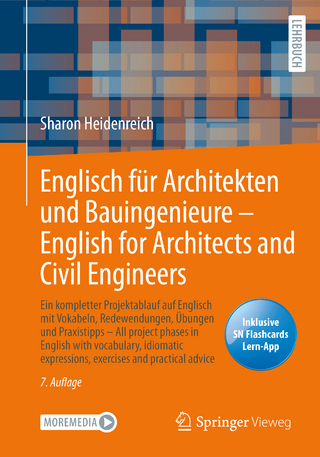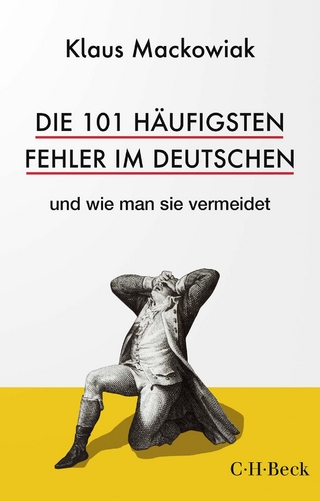
Content Area Reading and Learning
Lawrence Erlbaum Associates Inc (Verlag)
978-0-8058-5270-7 (ISBN)
- Titel erscheint in neuer Auflage
- Artikel merken
Content Area Reading and Learning: Instructional Strategies, Third Edition is organized around five themes:
Content Area Reading: An Overview
The Teacher and the Text
The Students
The Instructional Program
School Culture and Environment in Middle and High School Classrooms
Pedagogical features: Each chapter includes a graphic organizer, a chapter overview, a Think Before Reading Activity, one or more Think While Reading Activities, and a Think After Reading Activity. The activities present questions and scenarios designed to integrate students’ previous knowledge and experience with their new learnings about issues related to content area reading, literacy, and learning, and to serve as catalysts for thinking and discussions.
New in the Third Edition
The latest information on literacy strategies in every content area
Research-based strategies for teaching students to read informational texts
Up-to-date information for differentiating instruction for English-speaking and non-English speaking students
An examination of youth culture and the role it plays in student learning
A look at authentic learning in contexts related to the world of work
Ways of using technology and media literacy to support content learning
Suggestions for using writing in every content area to enhance student learning
Ideas for using multiple texts for learning content
A focus on the assessment-instruction connection
Strategies for engaging and motivating students
Content Area Reading and Learning: Instructional Strategies, Third Edition, is intended as a primary text for courses on middle and high school content area literacy and learning.
Contents: Preface. Part I: Content Area Reading: An Overview. M.W. Olson, E.K. Dishner, Content Area Reading: A Historical Perspective. T.W. Bean, J.E. Readence, Content Area Reading: The Current State of the Art. Part II: The Teacher and the Text. D.L. Schallert, N.L. Roser, The Role of Textbooks and Trade Books in Content Area Instruction. E. Fry, Understanding the Readability of Content Area Texts. B.B. Armbruster, Considerate Texts. S. Simonsen, Identifying and Teaching Text Structures in Content Area Classrooms. Part III: The Students. N. Marshall, The Students: Who Are They and How Do I Reach Them? M.R. Ruddell, Engaging Students' Interest and Willing Participation in Subject Area Learning. C. Smith, Context for Secondary Reading Programs. E.W. Thonis, Students Acquiring English: Reading and Learning. Part IV: The Instructional Program. L.R. Roehler, The Content Area Teacher's Instructional Role: A Cognitive Mediational View. L. Mikulecky, Real-World Literacy Demands: How They've Changed and What Teachers Can Do. C.M. Santa, L. Havens, S. Harrison, Teaching Secondary Science Through Reading, Writing, Studying, and Problem Solving. C.W. Peters, Reading in Social Studies: Using Skills and Strategies in a Thoughtful Manner. N. Farnan, A. Romero, Understanding Literature: Reading in the English or Language Arts Classroom. J.F. Curry, The Role of Reading and Writing Instruction in Mathematics. L.M. Gentile, M.M. McMillan, Reading and Writing in Sports and Physical and Health Education. M.F. Graves, W.H. Slater, Vocabulary Instruction in Content Areas. D.M. Ogle, Study Techniques That Ensure Content Area Reading Success. D. Lapp, J. Flood, R.P. Hoffman, Using Concept Mapping as an Effective Strategy in Content Area Instruction. H.M. Anthony, T.E. Raphael, Using Questioning Strategies to Promote Students' Active Comprehension of Content Area Material. P.L. Anders, C.V. Lloyd, The Significance of Prior Knowledge in the Learning of New Content-Specific Ideas. J.F. O'Flahavan, R.J. Tierney, Moving Beyond Reading and Writing in the Content Areas to Discipline-Based Inquiry. Part V: Model Programs. R.T. Vacca, J.L. Vacca, N. Prosenjak, L. Burkey, Creating Response-Centered Learning Environments: Using Authentic Texts to Extend and Enrich the Curriculum. R.E. Slavin, A Cooperative Learning Approach to Content Area Teaching. R. Farr, R. Pritchard, Assessment in the Content Areas: Solving the Assessment Puzzle. J. Barton, Theory Becomes Practice: A Design for Content Area Lesson Planning. K.D. Wood, Preferred Instructional Practices in the Content Areas. D. Alvermann, Crossing Boundaries With Literate Actions: A Look Inside Successful Content Area Classrooms.
| Verlagsort | Mahwah |
|---|---|
| Sprache | englisch |
| Gewicht | 771 g |
| Themenwelt | Schulbuch / Wörterbuch ► Wörterbuch / Fremdsprachen |
| Geisteswissenschaften ► Sprach- / Literaturwissenschaft ► Sprachwissenschaft | |
| Sozialwissenschaften ► Pädagogik | |
| ISBN-10 | 0-8058-5270-0 / 0805852700 |
| ISBN-13 | 978-0-8058-5270-7 / 9780805852707 |
| Zustand | Neuware |
| Haben Sie eine Frage zum Produkt? |
aus dem Bereich



